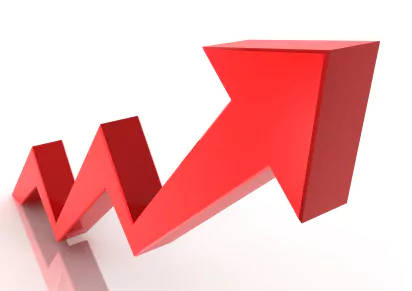An interview with Ryan Fox of Green Markets, a Bloomberg Company.
If you have been reading this blog for a while you know we normally do not do interviews. However, there is nothing “normal” about the world we are living in or about the current state of corrugated pricing.
We receive hundreds of calls and emails every month, and over the past twelve months, many are seeking information not about box specs or applications, but about the chaotic, unpredictable corrugated market pricing. After a wild 2021 with three substantial price increases, I hate to say it, but 2022 may be as tumultuous as last year.
One of the best resources I have found for unbiased, independent, corrugated market information and analysis is the Green Markets Box Report. The Box Report provides market updates, commentary, and relevant data to their subscribers. Much like Covid, there is a lot of information out there about the current price madness in the corrugated industry, but you really don’t know who or what to believe.
I asked them to help me create a “Corrugated 101” type blog post that would help our readers better understand the situation we are all facing. Ryan Fox, one of their analysts, worked in the packaging industry for over ten years before joining the Green Markets team. His industry knowledge and experience gives him perspective and credibility others cannot claim. Here are Ryan’s responses to a few of the FAQs we have received:
What are the factors that determine corrugated cost?
Factors that determine the cost of corrugated are many. Right now, things like diesel fuel, freight, natural gas, and labor are really affecting the pricing. The actual cost of fiber whether it is virgin fiber or recycled fiber it’s not nearly as crucial currently as these other costs.
How is corrugated pricing determined and by whom?
Corrugated pricing is determined by several factors. First, paper mills determine the price of paper. They sell rolls of paper to their customers called corrugators.
Corrugators take linerboard and medium, and combine them to make corrugated sheets. Sometimes those corrugators have converting equipment to turn the sheets into boxes. Sometimes they send those sheets to a sheet plant that converts the sheets into boxes. Each one of those companies is buying and selling a product. Each one of those companies also must deal with its own costs like labor, transportation, electricity, and the cost of the actual paper itself. The final price of the box is determined by the volume of the order, style, test, printing, unitization, and where the boxes will be delivered.
What role does “Pulp and Paper” play in the process?
“Pulp and Paper Week” is a publication that has been a standard in the industry for a long time. Most, if not all, contracts for corrugated boxes are tied to their report of moving prices. That means that producers can increase the cost of paper but until the publication reports that the prices changed, box prices won’t change for those that have a contract with this kind of verifying mechanism. Producers can change their prices any time they want for buyers that don’t have contracts. At one point last year, paper producers indicated a price increase of $60/ton on containerboard. The publication did not recognize the full price movement in one month. Instead, they split the increase over two months, creating much confusion.
Who are the players in the paper industry?
There are many key players in the paper industry. Some of the largest paper producers in the United States are International Paper, WestRock, Packaging Corporation of America, Georgia Pacific, Greif, and Pratt Industries. All these companies produce containerboard and also have plants that turn that paper into boxes. They are known as “integrated” producers and differ from companies who only produce paper or only make boxes from board other companies produce for them. Most of the paper made in the industry comes from virgin fiber. However, many companies are expanding their production to make 100% recycled paper. The average corrugated box in the USA contains about 50% recycled content.
If you really want or need more detail, I suggest you visit https://www.green-markets.com/BOX/Home.html.
Dennis Salazar’s comments:
This is but a glimpse at what forces drive price changes in the corrugated market. The thing to remember is that the corrugated box you purchase passes through many hands and the current extraordinarily high costs suffered by one are suffered by all.
Labor availability and costs impact everyone. Fuel and transportation costs affect every step along the way. No one is exempt from utility price increases so that cost is added on several times from paper sheet to finished and delivered corrugated box.
Obviously, we do not create or drive price increases, but it is critical that we understand them. It is equally important that we pay attention to what is happening in the market so we can advise and warn our clients and customers what to expect. We are proud to say that in 2021, we were ahead of each increase and not one of our customers ran out of packaging. Most of them were able to buy in at the lower prices so even though a price increase was inevitable, they were able to delay the higher cost as long as possible.
If you have questions or concerns, please call us at 630-551-1700 or contact us via email at Salazar Packaging. We will be glad to help you in any way possible to minimize your overall packaging costs and to help you understand the complexities of the current corrugated packaging market.
Related posts:
https://www.salazarpackaging.com/what-is-the-true-cost-of-a-dtc-shipping-box/
https://www.salazarpackaging.com/the-four-most-important-factors-in-dtc-e-commerce-packaging/



